
Just looking at this parking tower covered in thick ivy makes me feel a little cooler. I wonder what creatures might be living inside.
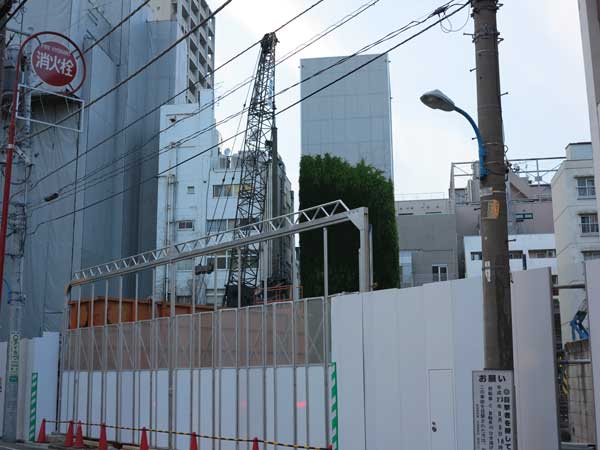

Just looking at this parking tower covered in thick ivy makes me feel a little cooler. I wonder what creatures might be living inside.

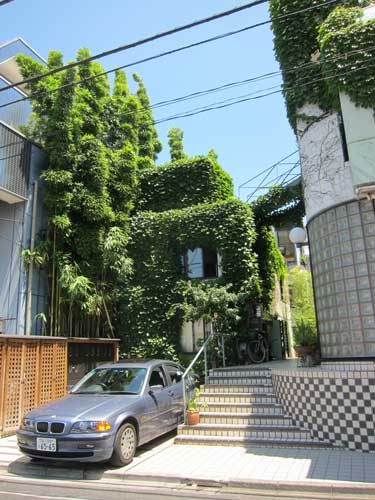
原宿の路地を歩くと、いろいろな庭を見ることができます。おしゃれな建物のグリーンカーテンや戦前からある伝統的な日本庭園もあります。私が好きな庭はシンプルで、たくましくて、さりげないです。大きな青山団地でトマトとゴーヤを見つけました。
With @luismendo visiting from Amsterdam, my Tokyo DIY Gardening pal Chris and I took him on a tour of Harajuku backstreets looking at gardens, eating tonkatsu, and stopping for some excellent cold coffee.
Harajuku is fun because the residential area has houses and gardens from all or almost all the past eight decades. The Harajuku gardens that appeal to me are similar to ones elsewhere in Tokyo for their simplicity and easy adaptation to urban life. Some results are clearly unintentional.
My photos include a three story garden of ivy and bamboo that covers one house and provides a buffer with its neighbor, a sleek concrete building’s balcony green curtains that are just starting to fill out on two floors, a blue flowering vine that somehow became a giant bush, a tiny entrance garden outside a pre-war house that has been converted into the very elegant Omotesando Coffee.
We also explored the enormous Danchi that between 246 road and Harajuku. This sprawling bauhaus-like public housing project has a wonderfully chaotic and varied set of gardens created by generations of residents. In July, we spotted lots of tomatoes, vertical bitter melon, and these purple gloves on top of an ad hoc garden support.

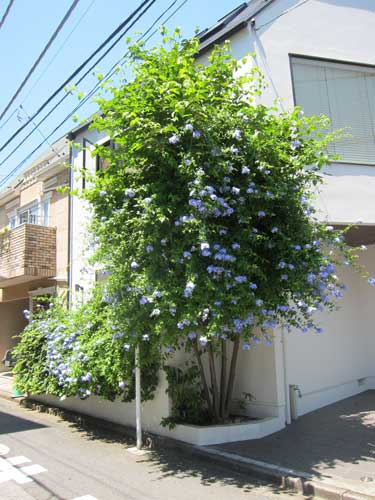

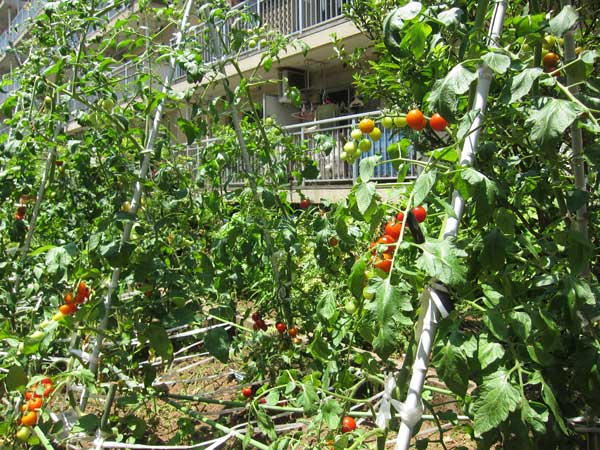



Construction sites in Japan, unlike in the United States, are almost always concealed behind shiny white walls. Recently, I have noticed more and more of these temporary walls being decorated with plants.
Above, three simple flower pots seem like a small an and informal gesture. Below, ivy is built into the wall itself. Somehow, given the humbleness of the plant material and scale, the less designed plants seem more generous and heart-felt. What do you think?

The first photo is from a development called Nakano Twin Mark Towers. A short while after taking the photo, I noticed a hand-made sign on the back alley complaining about its massive scale: a residential tower that will be 29 stories high, at least twice as high as any neighboring building on the south side of the station. I am surprised by its height, and also wonder whether the developers will succeed in finding such a luxurious clientele in this rather humble residential area. Below is a developer’s image from the website.


I love how this ivy has been trained into a perfect X-shape topiary. Clearly following the form of the steel support for the apartment building’s facade, the tidy and even pruning also demonstrates the gardener’s on-going care. This local person must enjoy plants and the opportunity to make something artful in a small space.
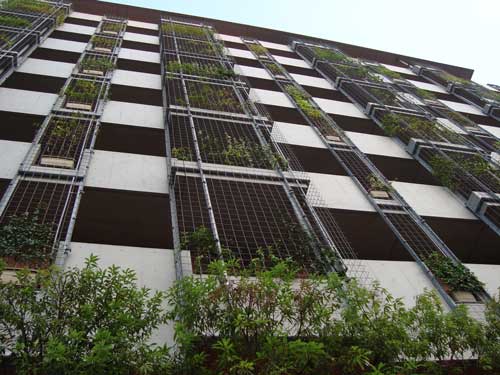
Near the Tsukishima riverbank community garden, there is a mid-rise senior center with two simple green wall of ivy. I wonder why it’s not fuller, and whether they are using rainwater capture. Or do the residents or staff water the small pots on each outdoor hallway.
